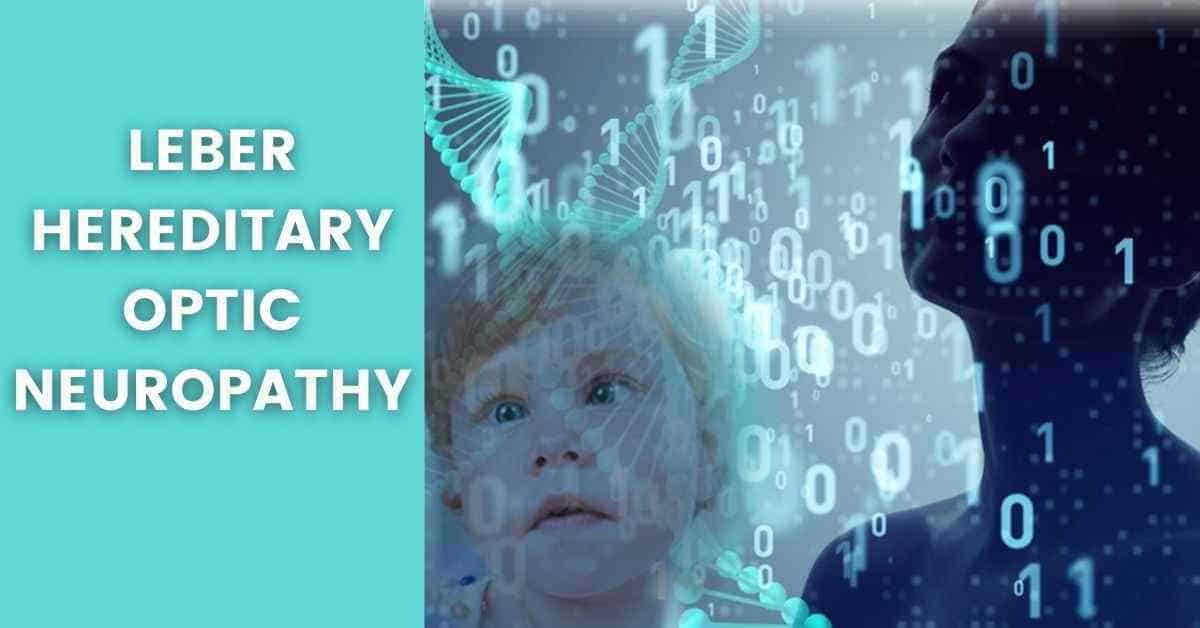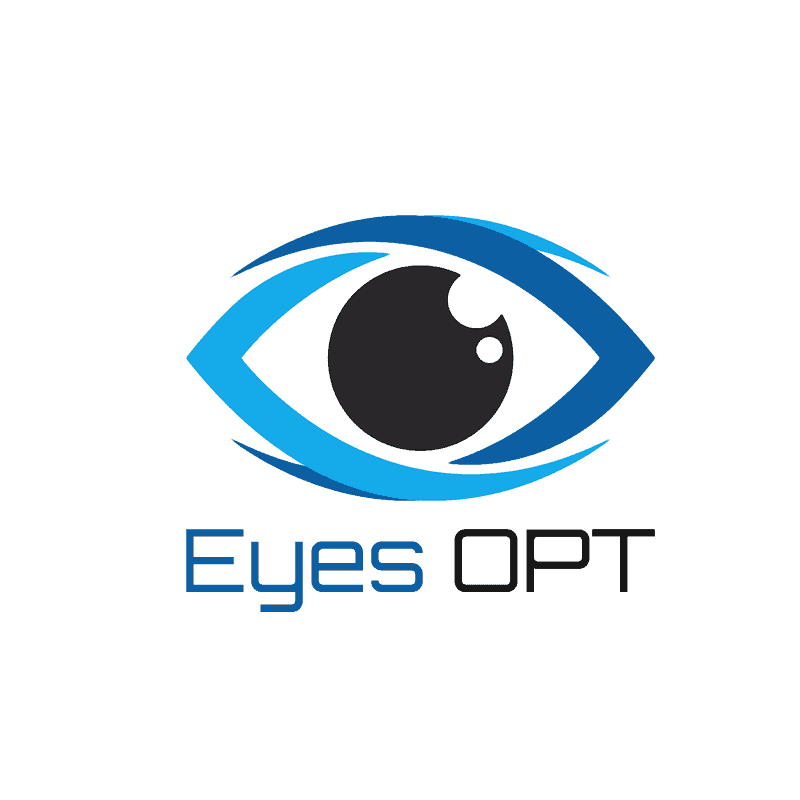Leber hereditary optic neuropathy (LHON) is an X-linked hereditary eye disease. LHON causes the loss of vision firstly by painless blurriness. It affects central vision. Loss of central vision affects all daily living activities. This disease transfers from the carrier or affected mother to the offspring. LHON mostly affects males. The most prominent symptom of the LHON is actual vision loss happening in teens or twenties. But in some rare cases, it also happened in childhood or later adulthood. Leber hereditary optic neuropathy is caused by the mutation of the genes that make it impossible to cure permanently; data shows that 95 percent of patients of LHON lost their vision permanently before turning 50. So this disease causes permanent central vision loss for sure.
Table of Contents
ToggleIs LHON is mitochondrial disorder?
Leber hereditary optic neuropathy is the most common disease of inherited mitochondrial disorder. This genetic order usually has a pattern of unilateral progressive optic neuropathy. Due to this pattern, Leber Hereditary Optic Neuropathy affects one eye in the starting. Afterward, it completely affects the other eye in weeks or months. This results in permanent vision loss in both eyes.
Why does LHON affect males?
Males are more affected than females and the reason is yet not been discovered. The mitochondrial disorder causes Leber hereditary optic neuropathy. This means that children inherit this disease from their mothers only, fathers can’t pass this trait to their children.
What are the risk factors associated with LHON?
The persons who suffer from Leber hereditary optic neuropathy often lose their central vision permanently. Central vision is vital for driving, reading, and recognition of faces.
The persons who are suffering from one mitochondrial mutation but never suffer from vision loss are the ‘carriers’. The female carriers are likely to transfer this trait to their children which may suffer from permanent vision loss.
Leber Hereditary Optic Neuropathy Inheritance:
Leber hereditary optic neuropathy is the result of a mutation in the genes of maternal genes in an embryo. The mtDNA mutation causes vision loss among the children which they get from their mothers. This is because the mitochondria in the embryo develop from the egg cells, not from the sperm cells.
Furthermore, the egg cells experience 3460, 11778, and 14484 mutations which cause mostly permanent vision loss. This mutation causes vision disorder and it exists in every generation. So, the mutation affects both male and female members of the family.
Fathers usually don’t pass this trait to their children but mothers do. There is the obvious possibility that from generations no one experience the symptoms of LHON but are only carriers.
Who is at risk of LHON?
Many reported patients had no family history of this disease. Due to the experience of no symptoms from the other members of the family they had no idea of being potential carriers.
Females who carry the mtDNA usually experience no or mild symptoms of Leber hereditary optic neuropathy. Being potential carriers, their own vision remains intact. But still, they transfer the faulty gene to their children in which boys could be more at risk.
Mitochondrial DNA mutation adversely affects the boys more than the girls and to this, there is no legitimate argument is available.
Leber Hereditary Optic Neuropathy Causes:
Leber hereditary optic neuropathy is the impact of mutation in some specific genes. These specific genes have loci in the DNA of cellular structures that are known as mitochondria. Usually, DNA packs 23 pairs of chromosomes within the nucleus. But the mitochondria also have a small quantity of their own DNA namely mitochondria DNA or simplified as mtDNA.
What mutation causes LHON?
The mutations that cause the LHON are:
- MT-ND1
- MT-ND4
- MT-ND4L
- MT-ND6
How does LHON start?
The genes related to Leber hereditary optic neuropathy have clear instructions for making a special protein. This special protein helps in processing normal mitochondrial function. The function is to make the protein that is part of a large enzyme complex and use to convert oxygen, fats, and sugar into energy. Cells use this energy to function properly.
When the mutation happened in the genes then this causes the disorder in the normal functions of the genes. It ultimately ends up in the death of cells in the optic nerve which caused the Leber hereditary optic neuropathy. The question that what causes this mutation in the genes still requires further research.
A significant percentage of people who have mtDNA mutation suffer no symptoms of Leber hereditary optic neuropathy. They usually lead a normal life. Approximately 50% of males and 85% of females have this mutation. But they experience no symptoms of vision loss and are related throughout their lives. Environmental factors could influence the severity of symptoms. In the affected person, smoking and the use of alcohol have severe side effects in the mtDNA mutation.
Leber Hereditary Optic Neuropathy Symptoms:
In most cases, patients experience no apparent symptoms. In this condition, whenever the affected individual experiences symptoms, they are always severe.
What are the symptoms of LHON?
The symptoms could be:
- Blurring and clouding of vision
- Loss of vision acuity
- Loss of color vision
When the person has suffered from LHON then firstly the patient experiences the blurring and clouding of vision. This symptom may manifest in one eye at a time or simultaneously in both eyes. If one eye is affected, then the other eye will also be involved in a few weeks or months.
After the blurring and clouding of vision, the patient experiences the loss of visual acuity. Afterward, the patient also loses his/her color vision. All these affect the central vision which is useful in driving, reading, and recognition of faces. The vision loss results in the atrophy of the optic nerve. The optic nerve carries signals from the eyes towards the visual cortex of the brain. Atrophy means cell death. In the damage of the optic nerve, the visual stimulus doesn’t pass on for further processing in the brain. In few cases of LHON, the central vision can gradually improve. But mostly it is permanent visual loss.
Vision loss is the symptom experienced by all the patients who are suffering from LHON. But some families or members can experience additional symptoms like:
- Tremors
- Movement disorders
- Abnormalities in electrical signals that administer heartbeat refer as cardiac conduction defect.
When a patient of LHON experiences such additional symptoms, the disorder is termed as LHON plus.
In addition to LHON plus some patients may also experience numbness, poor coordination, muscles weaknesses, and many other health problems. These symptoms are similar to those of multiple sclerosis; refer to as chronic disorder. The symptoms depend on the severity of the LHON in the patient. The mutation has a different effect on the optic nerve of each human being.
Why does LHON affect eyes and heart?
LHON is an inherited disease caused by the mutation of genes contained in the mitochondrial DNA. This helps to make the protein that converts oxygen, fats, and sugar into energy. This energy helps in the proper functions of the optic nerve and cardiac activities.
Due to mutation in the mtDNA, mitochondria stop functioning normally. It defects the production of energy sources. Thus it impairs the retina which ultimately results in permanent vision loss. As well as it affects cardiac activities which put pressure on the working of the heart.
Leber Hereditary Optic Neuropathy Diagnosis:
Any proven clinical ways for the diagnosis of LHON are known. Identification of the suspect is difficult unless or until the particular person experiences the symptoms.
Most commonly, molecular genetic testing detects LHON as this testing helps in identifying the three common mtDNA pathogenic variants.
The assumptions or symptoms usually direct the case in the direction of LHON.
How is LHON diagnosed?
The potential suspects of LHON are the individuals who are suffering from the following:
- Ophthalmologic
- Extraocular
- Neuroimaging
- Biochemical findings
- Family history
Leber Hereditary Optic Neuropathy Treatment:
LHON is a disease having a genetic basis and so medicines or therapies can not treat it. No proper treatment can restore already damaged vision. No surgical treatment can revert gene mutation except for gene therapies. But gene therapies have many ethical concerns and as an option is very difficult to attain.
How is LHON treated?
The only way to deal with LHON is to manage the patients efficiently by doing symptomatic treatment and genetic counseling.
Genetic counseling is the process by which potential carriers are informed about different prospects of transferring the disease. It is important to counsel a female carrier. Because she sure transfers faulty genes to the next generation in this case. It is advised to avoid cousin marriages. This is so because in one family mutated gene shuffles but remains within the lineage. Mutated DNA of LHON is the pathogenic variant.
The 60 percent of patients suffering from LHON have a maternal family history of having mtDNA mutation. Genetic counseling also comprises:
- prenatal testing for the pregnancy
- pre-implantation genetic testing
This avoids the risk of LHON in the new generation. It is essential to recognize the carrier mother early.
Why interpretation of parental testing is complicated?
The accurate interpretation of prenatal testing is complex. Because mtDNA mutation presents in amniocytes and chorionic villi confusing the results with the other fetal and adult tissues.
These testing also do not explain the level of severity of mtDNA mutation. No test can estimate the damage to the optic nerve and the extent of permanent vision loss. But having no treatment is forcing to continue genetic counseling to avoid any prospects that lead to LHON. Because once the symptoms of vision loss appear, there is no cure to bring back the patient’s sight.
The proven ways of treating the LHONas free radical scavengers are:
- Idebenone
- EPI-743
But still, there is no cure for this disease to prevent the person from permanent vision loss. Due to the fact that the disorder is in gene mutation, whose effect can’t undo.
Furthermore, some patients can recover some of the vision who are suffering from the mutation of 3460 and 14484. But in the cases of 11778 mutations, recovery is rare.
Leber Hereditary Optic Neuropathy Life Expectancy:
In most cases, permanent vision loss has no chance of recovery by any proven treatment. The life expectancy varies. 95 percent of the individuals having LHON lose their vision permanently before they turn 50 years. 5 percent of the reported cases of LHON may experience any exception to survive more than the prescribed age.
Is LHON Dominant or Recessive?
LHON is a disorder that happened due to the mutation of mitochondrial DNA. It affects the optic nerve which results in permanent vision loss. Mothers transfer mutated genes onward. Mitochondrial DNA mutations do not travel down via the paternal line, only females can pass this trait to their children.
These particular individuals are “carriers” and the LHON causing gene mutation is recessive to them.
The female carriers transfer the trait to their children. When any of the children have prominent symptoms of LHON and experience sudden vision loss then it means; the pathogenic variant of mtDNA is dominating the particular person of the particular generation.
Can LHON be prevented?
No prevention can avoid the effects of LHON. The actual reason for the mtDNA mutation is still enigmatic. But the vitamins and supplements can help to slow down vision loss.
But it is not confirmed that vitamins and supplements actually slow down the impairment of vision but there is the assumption. Management of the affected individual by counseling and other ways has proved to have a positive impact along with the visual aids.

The latest research and updates straight to your inbox !
Join our subscribers for exclusive access to our monthly newsletter related to optometry







Pingback: Hereditary eye diseases that cause blindness - EyesOPT
Pingback: Leber Hereditary Optic neuropathy Life Expectancy - EyesOPT